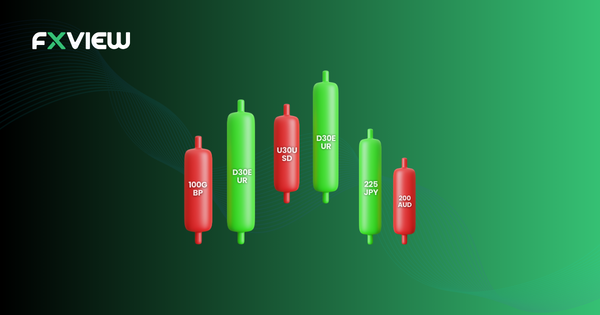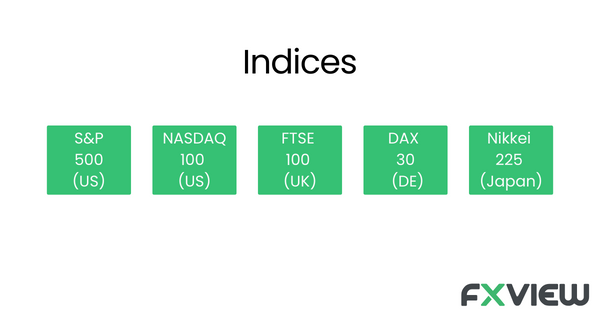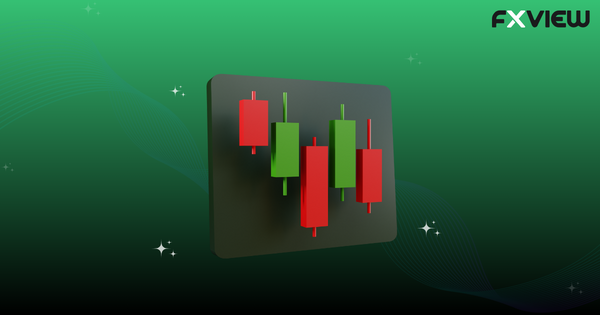
Indices CFD trading
In the ever-evolving world of financial markets, there are myriad instruments available to traders. Contracts for Difference (CFDs) have risen to prominence, offering a diverse range of trading options. Among these, Indices CFD trading stands out as a popular and versatile choice. Let’s delve into the world of Indices CFD trading, discussing what it is, how to trade it, its advantages and disadvantages, potential opportunities, and risks.
What is Indices CFD trading?
Indices CFD trading involves speculating on the price movements of stock market indices, such as the S&P 500, FTSE 100, or DAX 30, without owning the underlying assets. It allows traders to take advantage of both rising and falling markets.

Examples of popular Indices CFD Trading:
- S&P 500 (US)
- NASDAQ 100 (US)
- FTSE 100 (UK)
- DAX 30 (Germany)
- Nikkei 225 (Japan)
How to trade Indices CFDs?
- Choose a Reliable Broker: You may start by selecting a trustworthy CFD broker with the indices you want to trade.
- Open an Account: Create a trading account with the chosen broker, providing the necessary information and agreeing to their terms.
- Deposit Funds: You may add funds to your account, ensuring you start with an amount you can afford to lose and understand the risks involved in CFD trading.
- Research Indices: Study the indices you’re interested in, understanding their behavior and factors affecting them.
- Analyze and Decide: You may consider using technical and fundamental analysis to decide whether to buy (go long) or sell (go short) on an index CFD.
- Execute the Trade: Use the broker’s platform if you decide to place a trade, specifying position size, order type, and trade details.
- Manage Risk: Set stop-loss and take-profit orders to control risk and lock in potential profits.
- Monitor and Adjust: Keep an eye on your open positions, adjusting as needed based on market conditions.
- Review and Learn: After each trade, evaluate your performance to refine your strategy for future trades.
Remember that skillful trading requires practice, discipline, and ongoing learning. Start cautiously, and you could later on gradually improve your trading strategy as you gain experience and confidence.
Advantages of CFD Indices Trading:
- Diverse Market Exposure: Indices CFD trading has the advantage of concurrently exposing investors to several indexes that reflect different economies. By spreading their risk over several markets, traders might possibly profit from a variety of economic developments.
- Leverage: CFDs give traders the chance to use borrowed funds to increase the size of their positions. This is not normally possible with traditional trading methods. While this may potentially increase your chances of getting gains, it’s important to be mindful that it also increases the likelihood of losses and risks.
- Hedging: By taking positions in indices that are negatively connected to their current holdings, traders can use indices CFD trading to diversify their investment portfolios. With the use of this hedging approach, prospective losses in one portion of their portfolio can be balanced out by gains in another.
- 24/5 Market Access: The forex market is open twenty-four hours a day, five days a week, which enables traders to access and trade CFD indices in many time zones. This adaptability accommodates dealers from different geographical and temporal zones.
- Lower Costs: In terms of commissions and fees, CFD trading is frequently less expensive than regular stock trading. Traders looking to lock potential returns may find this cost-efficiency to be intriguing.
Disadvantages of CFD Indices Trading:
- Risk associated with leverage: Although it can potentially increase earnings, leverage exposes traders to a high risk of losing more money. Due to the high level of leverage, even little changes in the market that work against a trader’s position can cause significant losses. Leverage requires careful risk management.
- Overnight Financing Fees: If CFD holdings are held overnight, fees for overnight financing, sometimes referred to as swap or rollover fees, may be incurred. Potential profits may be reduced by these fees, particularly for long-term positions.
- Limited Voting Rights: CFD traders lack ownership and voting rights in the underlying companies represented by the indices they trade, in contrast to traditional stockholders. They have little influence over corporate actions; they are simply speculating on potential price changes.
- Counterparty Risk: When trading CFDs, the trader and the CFD provider enter into a legal relationship. The CFD provider may put traders at risk of counterparty loss if it fails to fulfill its obligations or runs into financial trouble. To reduce this risk, a thorough investigation of the CFD provider’s dependability is necessary.
Indices trading may offer diversification, leverage, and flexibility but comes with the potential for significant losses due to leverage and overnight financing costs. Traders should be aware of the market’s volatility, the lack of voting rights, and the importance of choosing a reputable CFD provider to manage counterparty risk effectively.
Could CFD Trading Profitable?
The profitability of CFD trading varies widely based on factors like your trading strategy, risk management, and market conditions. While some traders may achieve potential profits, others may incur significant losses. It’s crucial to have a well-thought-out trading plan, risk management strategy, and the necessary knowledge before entering CFD markets.
How Much Can You Make or Lose in CFD Trading?
The potential opportunities in CFD trading are countless, but so are the risks involved. Profits can potentially range from modest gains to substantial returns, depending on your trading strategy, risk management, risk tolerance, and market conditions. You should always consider approaching CFD trading with caution and consider your financial situation carefully.
Key Takeaways:
- Indices CFD trading involves speculating on the price movements of stock market indices without owning the underlying assets, offering potential opportunities in both rising and falling markets.
- Popular indices for CFD trading include the S&P 500, NASDAQ 100, FTSE 100, DAX 30, and Nikkei 225, which may allow traders to access various global markets.
- To trade Indices CFDs, you can select a reliable broker, open an account, deposit funds, research indices, analyze and construct your trading strategy, and execute trades, you should also consider managing risk with stop-loss and take-profit orders, monitor positions, and continually learn and adjust.
- CFD Indices Trading offers diverse market exposure, leverage for potential profit and opportunities, hedging capabilities, 24/5 market access, and often lower costs compared to traditional stock trading.
- Risks include high leverage potential for substantial losses, overnight financing costs, market volatility, limited voting rights, and counterparty risk with CFD providers.
- CFD trading’s potential profitability varies based on individual trading strategies, risk management, and market conditions. Improvement requires knowledge, careful planning, and continuous learning.
- Potential profit in CFD trading can range from modest gains to substantial returns, but it’s essential to consider the associated risks and trade responsibly.
Conclusion
Indices CFD trading can offer an attractive avenue for traders to access global markets. However, results hinge on informed decision-making, disciplined risk management, and ongoing self-improvement. You may approach CFD trading with a well-thought-out strategy and realistic expectations, always weighing potential profits against potential losses.
Disclaimer: The information in this article is provided for educational and informational purposes only and is not intended to be, nor does it constitute financial, investment or trading advice. You should not make any financial, investment or trading decision based on the information provided in this article without performing your o


